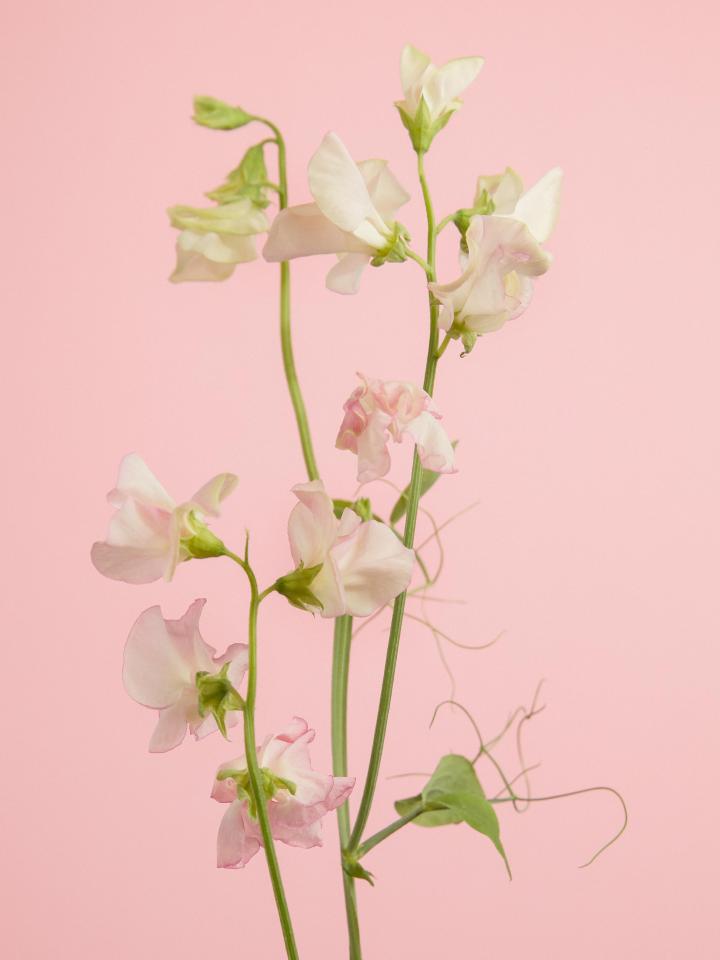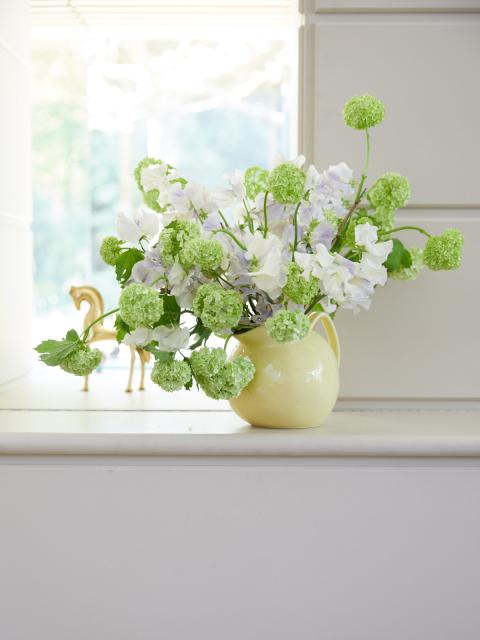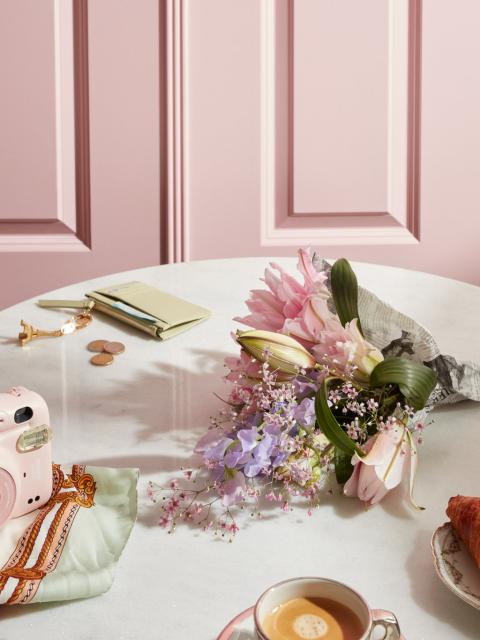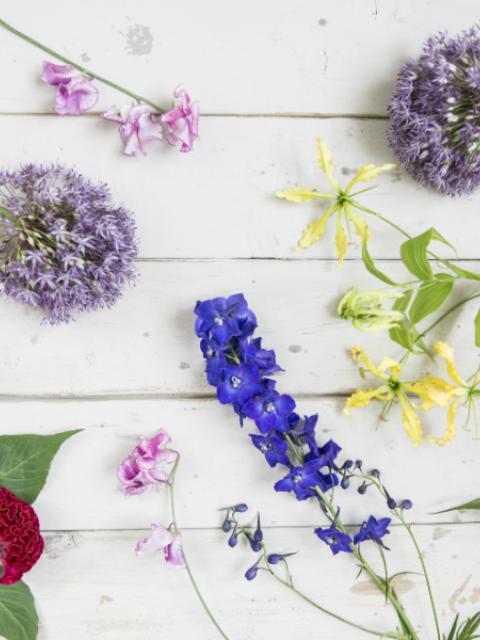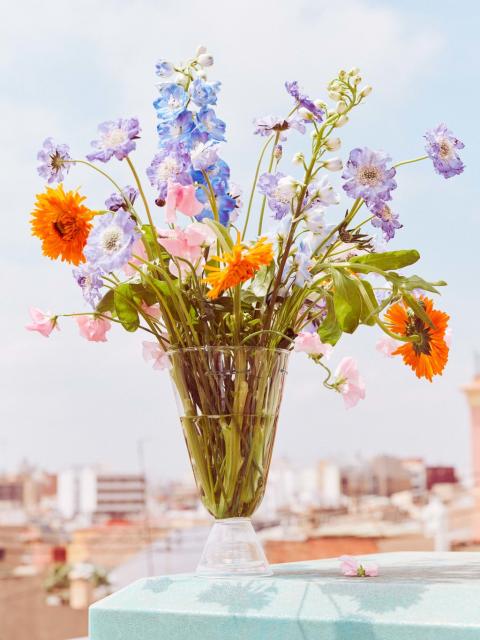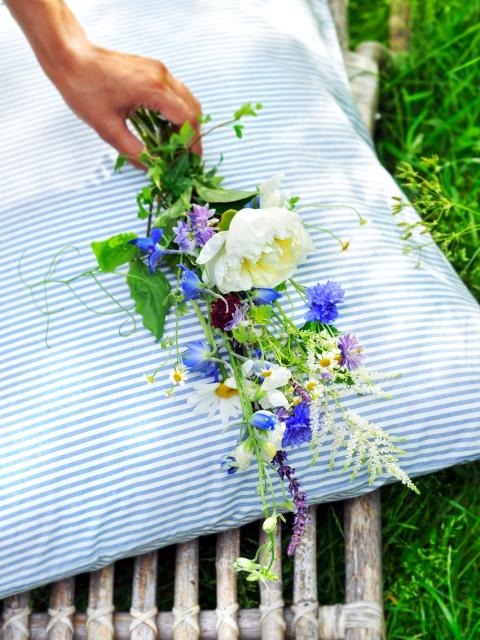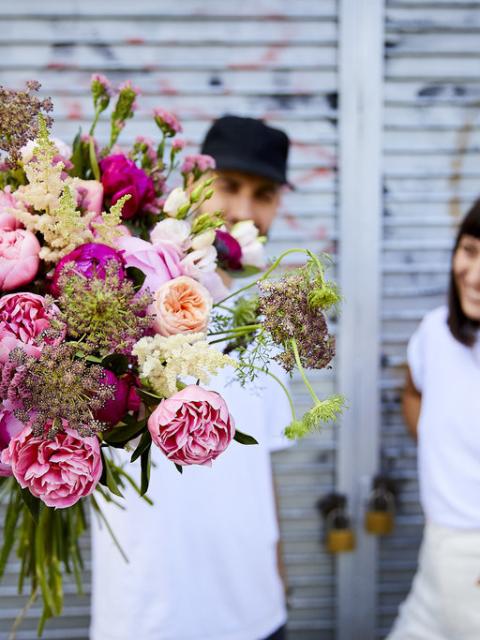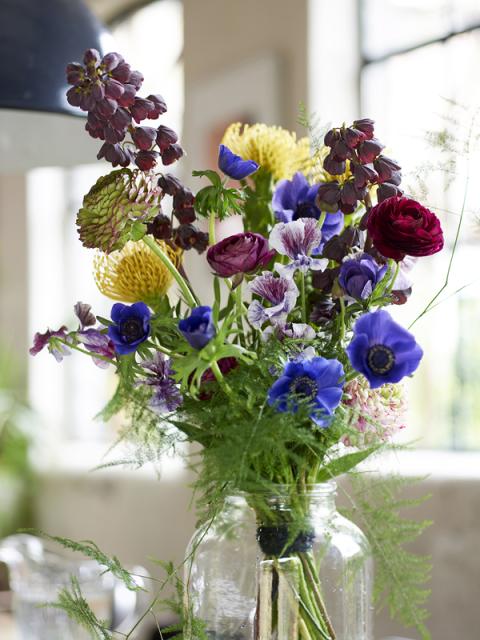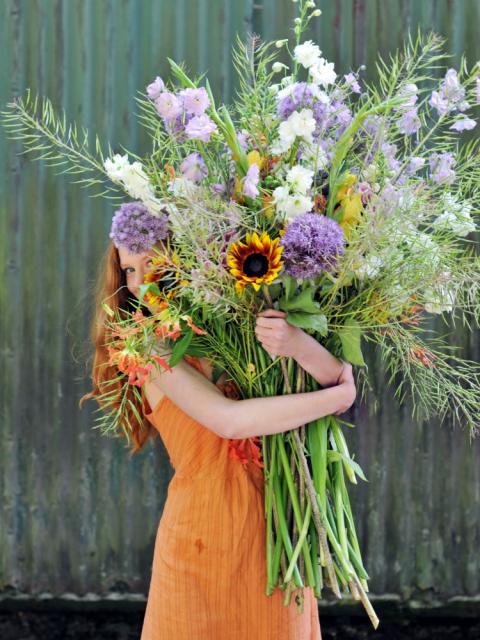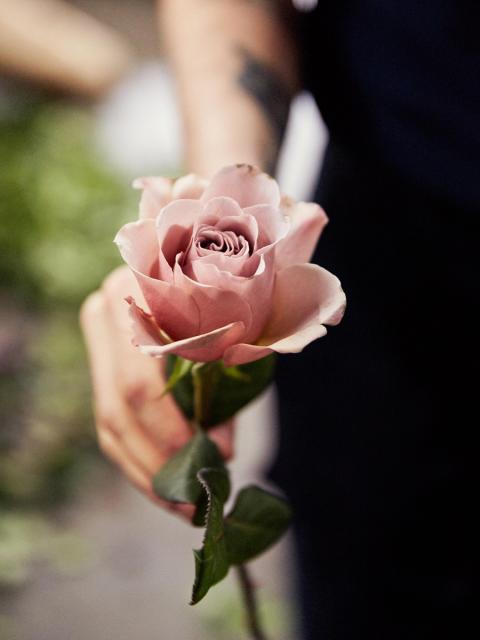Colours and shapes
The flowers are available in an endless array of soft pastel shades and blended colours. Opt for vermillion, lilac, mauve, white or cream, or even one of the bicoloured varieties. The flowers look spectacular either as individuals, or clustered together on their long stems. Their appearance and enchanting fragrance make them very popular for weddings, and as floral notes in the scents of luxury perfume houses. The plant is is a member of the legume family, and it does produce peas, although they are not edible.
Symbolism
The sweet pea is a romantic flower, traditionally blooming on 21st June, the longest day of the year. It symbolises kindheartedness, perhaps because it's enchanting fragrance makes life more beautiful.
Origin
A native of Sicily, the flower originally only grew in shades of violet or crimson. All our varieties descend from the garden of a monk named Francisco Cupani, who cultivated wild sweet peas at the end of the 17th century. Our modern version of the flower was created by Scotsman Henry Eckford in the late 1880s. Often referred to as 'the father of the sweet pea', he created the Grandiflora variety, which is what we buy in florists today.

